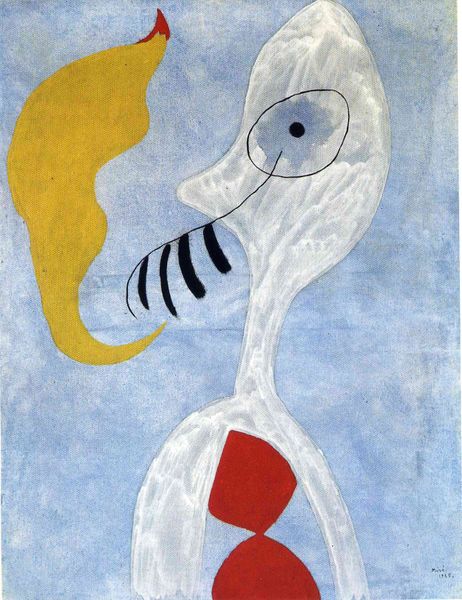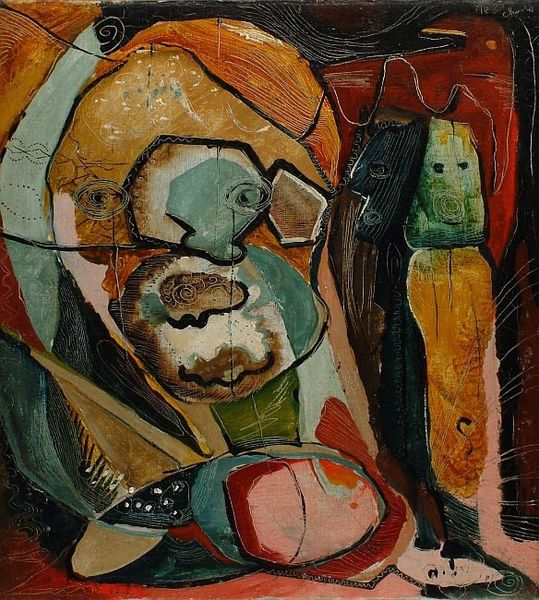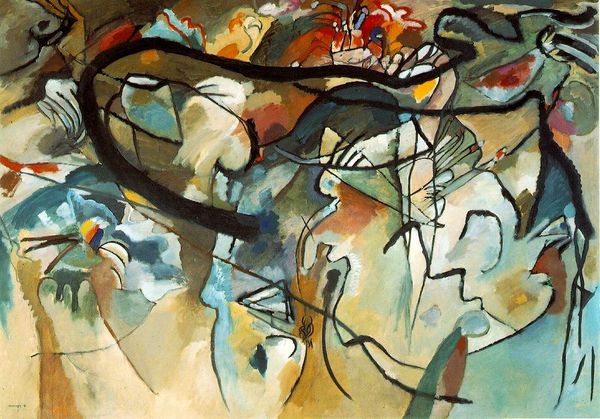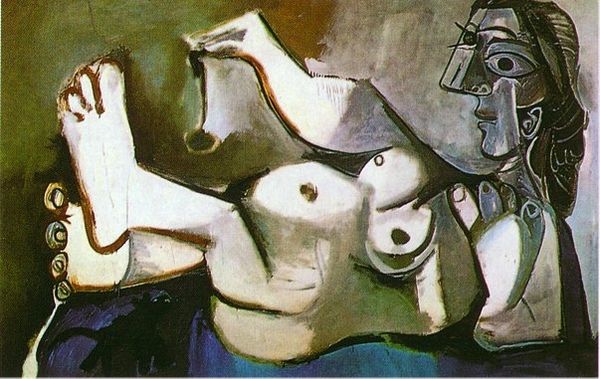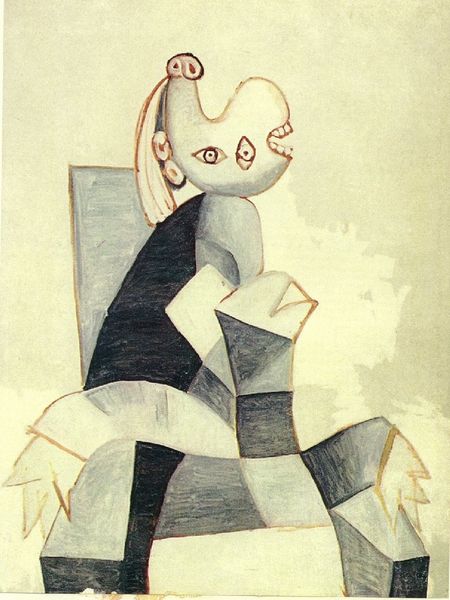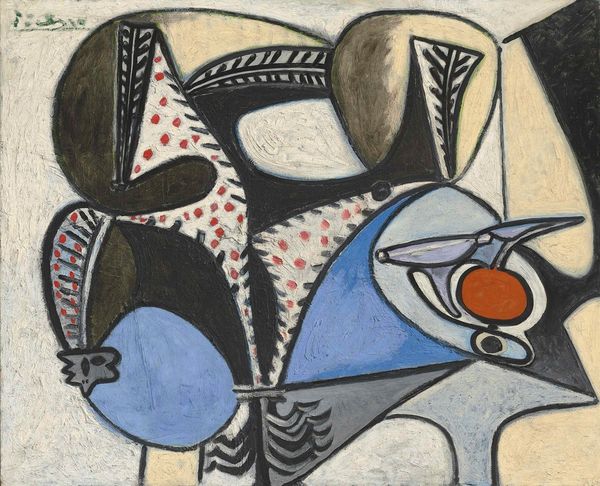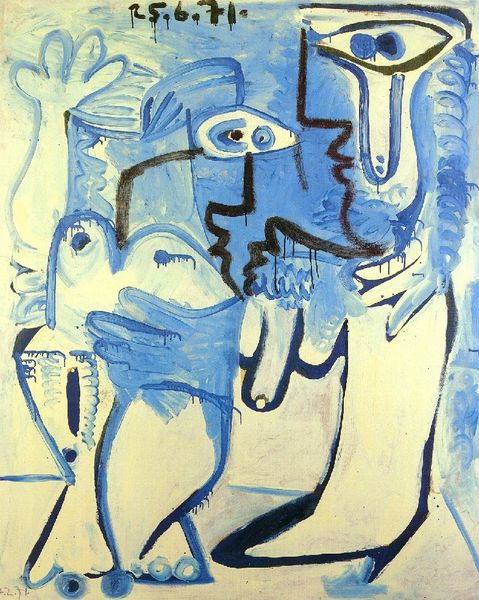
painting, watercolor
#
portrait
#
abstract painting
#
narrative-art
#
painting
#
figuration
#
watercolor
#
expressionism
#
abstraction
#
painting art
#
expressionist
Dimensions: 68.5 x 94 cm
Copyright: Francis Picabia,Fair Use
Curator: Here we have Francis Picabia’s "Woman with a Dog" created around 1926 using watercolor and paint. What are your first impressions? Editor: Stark. Stripped down. Almost aggressively simplified in its forms. The woman seems to have this avian quality… a birdlike mask for a face. It’s unsettling. Curator: Unsettling is a key effect. Picabia was deeply involved with Dada, a movement rooted in rejecting bourgeois values after the trauma of World War I. Consider the means of production: watercolor on possibly inexpensive paper allows for quick, reproducible imagery. This defies notions of high art meant for an elite. Editor: Yes, and note how Picabia deploys color—limited, almost bleached out. The blue ground against that peachy sky feels arbitrary. It refuses naturalistic representation, forcing us to engage with its pure artifice, the materials themselves and their symbolic implications in the making of the composition. Curator: Absolutely. Think about the dog, too. Traditionally, a symbol of fidelity and domesticity. But here, it’s rendered with the same stark abstraction as the woman, its very symbolism thrown into question. Picabia isn’t celebrating these themes; he’s dismantling them, referencing social context. The means of the picture comment on the constructed idea of beauty and social expectations. Editor: The way the white highlights are used across both figures, almost like crude anatomical diagrams, enhances that feeling. It suggests a mechanical, clinical examination rather than an affectionate portrait. Consider the gaze, or lack thereof; it eludes genuine emotion. Curator: These materials suggest art made available for all classes. Editor: And it's so effective; thinking through its components has shifted my perception entirely. Curator: Yes, from dismissing it initially to perhaps gaining a deeper appreciation of its conceptual layering and message of how the process affects a work's intent.
Comments
No comments
Be the first to comment and join the conversation on the ultimate creative platform.



